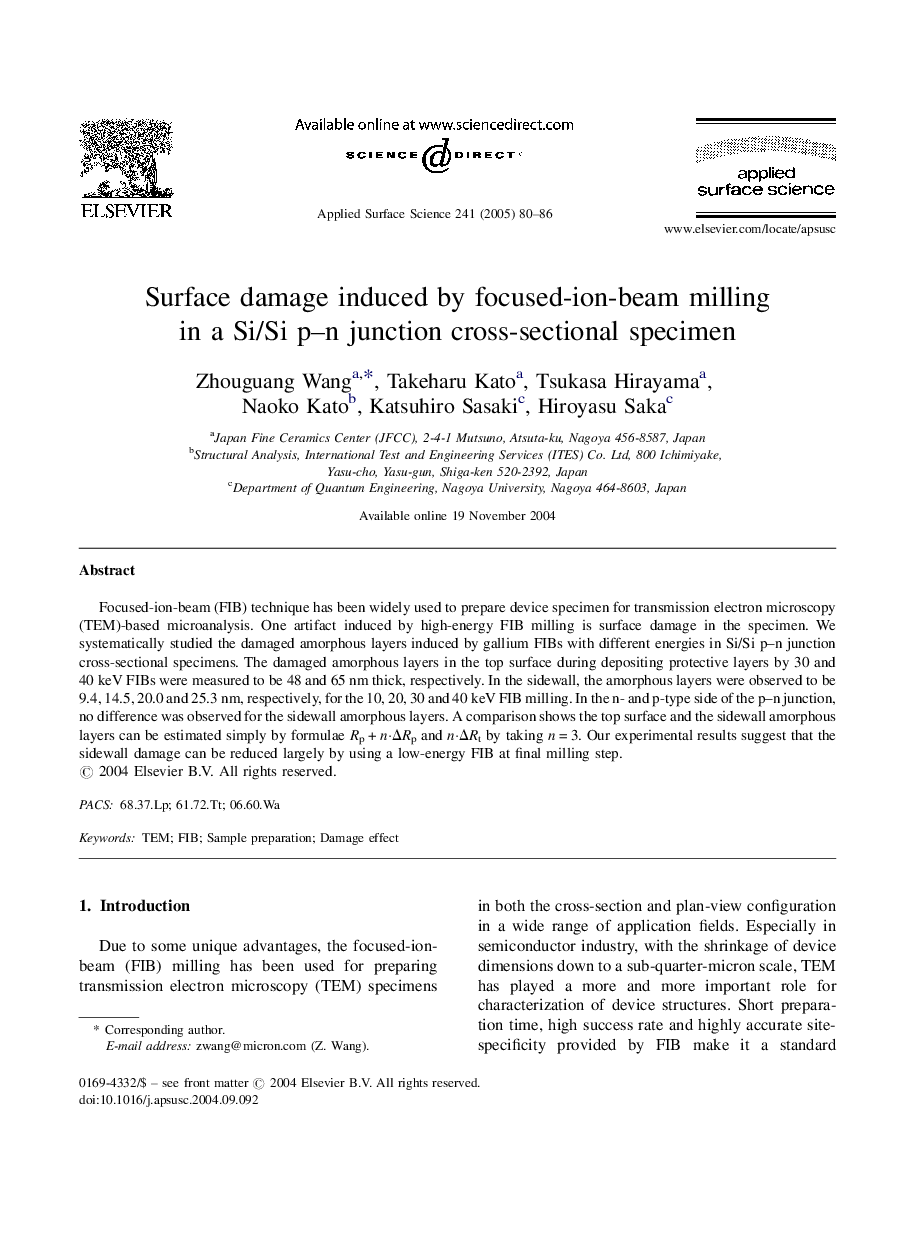| Article ID | Journal | Published Year | Pages | File Type |
|---|---|---|---|---|
| 9567516 | Applied Surface Science | 2005 | 7 Pages |
Abstract
Focused-ion-beam (FIB) technique has been widely used to prepare device specimen for transmission electron microscopy (TEM)-based microanalysis. One artifact induced by high-energy FIB milling is surface damage in the specimen. We systematically studied the damaged amorphous layers induced by gallium FIBs with different energies in Si/Si p-n junction cross-sectional specimens. The damaged amorphous layers in the top surface during depositing protective layers by 30 and 40 keV FIBs were measured to be 48 and 65 nm thick, respectively. In the sidewall, the amorphous layers were observed to be 9.4, 14.5, 20.0 and 25.3 nm, respectively, for the 10, 20, 30 and 40 keV FIB milling. In the n- and p-type side of the p-n junction, no difference was observed for the sidewall amorphous layers. A comparison shows the top surface and the sidewall amorphous layers can be estimated simply by formulae Rp + n·ÎRp and n·ÎRt by taking n = 3. Our experimental results suggest that the sidewall damage can be reduced largely by using a low-energy FIB at final milling step.
Related Topics
Physical Sciences and Engineering
Chemistry
Physical and Theoretical Chemistry
Authors
Zhouguang Wang, Takeharu Kato, Tsukasa Hirayama, Naoko Kato, Katsuhiro Sasaki, Hiroyasu Saka,
